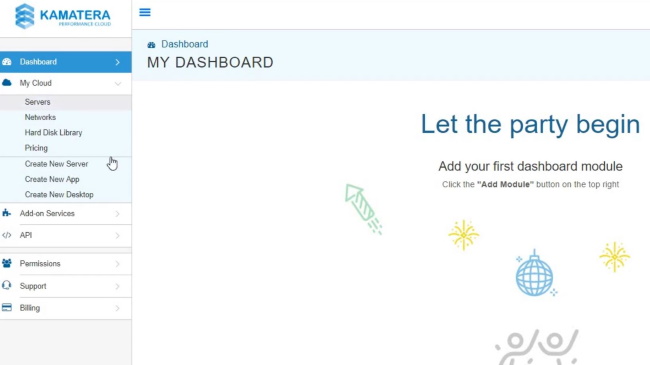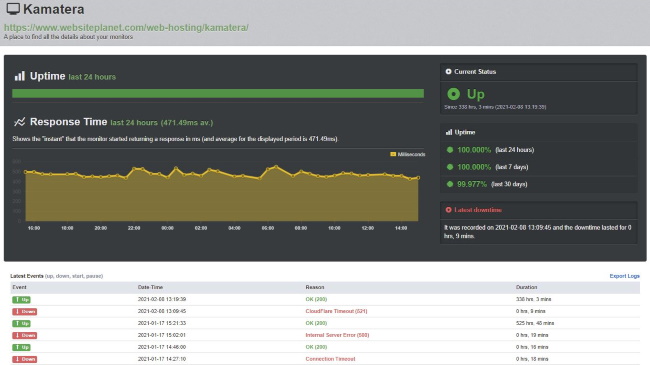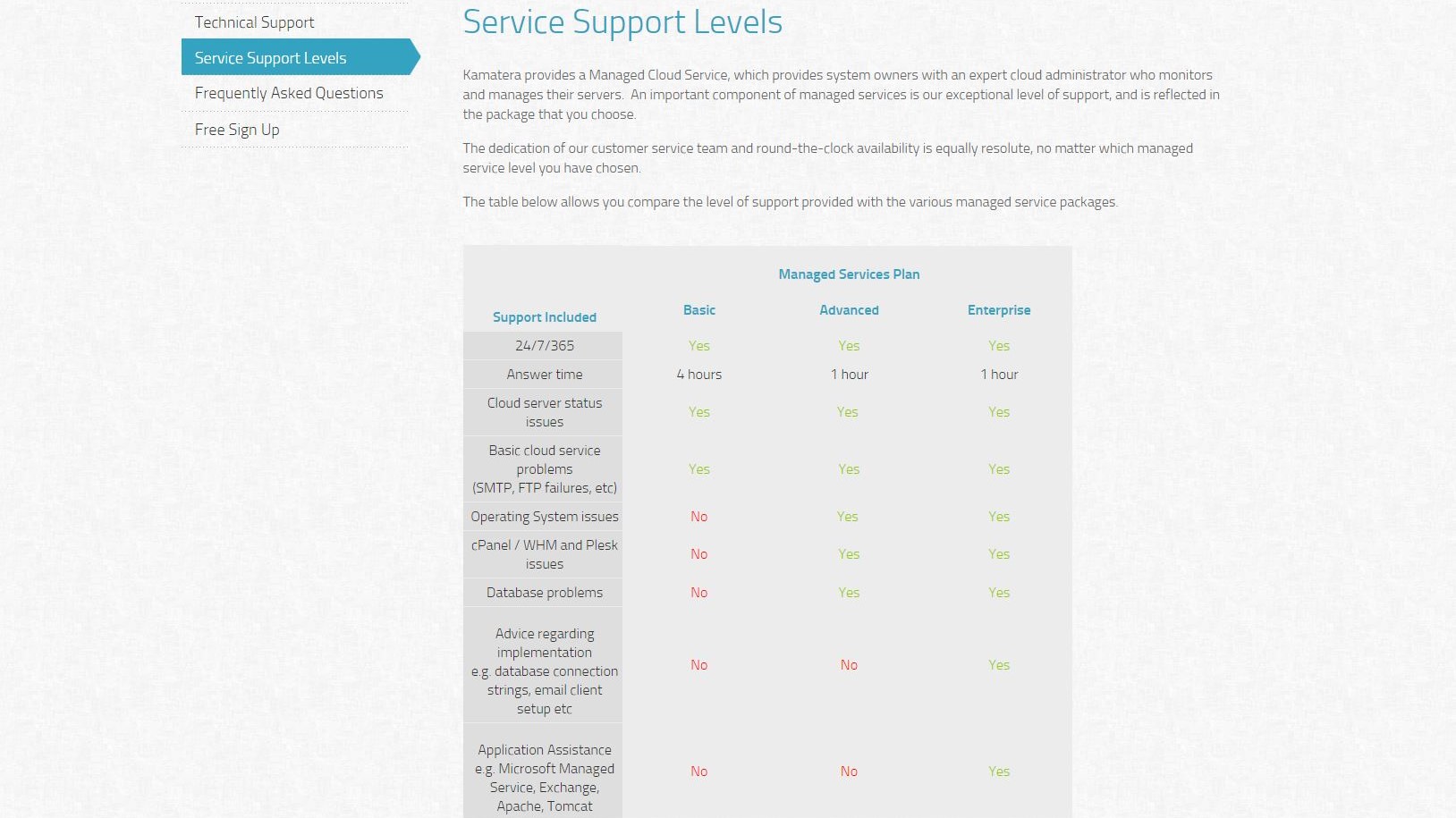Kamatera
Established in 1995, Kamatera has been gathering invaluable industry experience without a break for 25 years (as of this year) and it has been doing so as a part of an international network of IT based service providers known as OMC Computers. In 2002, the first hosted virtual machine using VPS was deployed and since then they’ve been supplying these solutions to all sorts of businesses (and organizations in general).
From their main office in New York (the USA) they operate 13 global data centers (including New York, Dallas, Santa Clara, Toronto, London, Amsterdam, Frankfurt, Hong Kong and Tel Aviv). Thousands of servers around the globe provide enterprise-level cloud-based VPS-type services to “tens of thousands of clients including start-ups, application developers, international enterprises, and SaaS providers.”
- Interested in Kamatera? Check out the website here
Kamatera claims that they utilize “cutting edge” technology to provide reliability, security and constant surveillance of their “power failure proof” data centers. All specifications and technical details about the servers can be found on their main website (which is available in five major languages including French, German, Spanish, Russian and Hebrew) together with a considerable amount of information about the services they provide.
If you have checked everything out and still would like to know more, their official blog should scratch that itch. Although it seems to be one of Kamatera’s newest projects (since all of the articles were published in 2020), it features a few pretty decent how-to articles. However, social networking doesn’t appear to be their cup of tea, since all of their accounts have been collecting dust for quite a while.
- We've also rounded up the best VPS hosting providers

Plans and pricing
It appears that Kamatera has an aim to make cloud hosting accessible to pretty much everyone, offering cloud-based VPS solutions with a price ranging from $4 to $1,000 per month (for dedicated servers). These plans are arranged one below the other and if you click on “More Info & Calculator” you’ll notice that all of them feature an impressively high level of customizability in terms of data centers, hosting subtype, processors, GB of storage (SSD), MB of RAM, MG/GB of monthly traffic, number of public IPs, operating systems and control panels.
Additionally, you can choose whether you want to be billed on a monthly or hourly basis, which we (unfortunately) seldom see.
Another beginner-friendly feature and one of its major selling points is a “totally” free 30-day trial, which they provide instead of a more common money-back guarantee. However, on the account of security reasons, Kamatera will ask you to provide details about your credit card, which is something to keep in mind.
When it comes to methods of payment, Kamatera fails to keep its flexibility, allowing payments to be made via credit cards or standing order alone.
Ease of use
If you are eager to try out what Kamatera has to offer but aren’t sure where to start, the safest bet is their 30-days free trial with “no commitment nor hidden fees” and an ability to cancel their services at any point in time. This promotional package includes one cloud server (with up to $100 for configuration), 1000GB of cloud storage, 1000GB of outgoing internet traffic, full access to all features of Kamatera’s management platform, an ability to upgrade or downgrade server (up to a value of $100), designated account manager and comprehensive customer support including consultations with professionals.
If all of this sounds good, you can sign up by providing them your email address, creating a password and (ideally) reading “Teams of Service'' from start to finish. However, if you thought this was it (we kind of hoped so), we’ll have to disappoint you. First you’ll have to pass the validation process and create an account by adding your personal data (your phone number included) as well as details about your credit card. Therefore, if you cancel their services within 30 days, they will remain free of charge. Otherwise, you are going to be charged for each day exceeding the trial period.
If you feel there’s no need for trial and want to purchase some of their packages straight away, you can opt for one of the simpler (pre-made) ones or tailor them to suit your needs. In either case, you’ll have to create an account with Kamatera, in the exact same fashion as described above.

Kamatera’s user interface is pleasantly simple and easy-to-use. However, no one is going to hold your hand while you try to find a way to install all the apps, get your hands on a desired control panel (they cost extra cash) or simplify getting your transferred domain to work.
We are sure you have figured it out by now, but we will say it anyway: Kamatera definitely isn’t something you would recommend to newcomers, unless they are ready and willing to (for some unknown reason) pay a pretty penny to have professionals do everything for them.

Speed and experience
Besides having servers pretty much everywhere, Kamatera’s impressive cloud infrastructure should guarantee a blazing fast performance of all its websites. With high hopes we tested the speed performance of Kamatera’s main website while eagerly waiting for GTmetrix to present us with results that will justify our high expectations. Unfortunately (as a bolt from the blue), we were faced with less than the average performance and an E (53%), which is far for anything to brag about. However, the time it took to fully load the page was 4.5 seconds, which is much better than the average result of 8.1.
As for uptime, Kamatera prides itself on its “extraordinarily high reliability and availability” and, therefore, guarantees 99.95% of it at all times. Since our faith was challenged previously, we found it a bit hard to trust their words. However, after monitoring the uptime of Kamatera’s main website for more than a month, we got a report showing 99.97% of uptime, which is slightly better than promised. Although there were a few instances of downtime (the longest one lasting for 19 minutes straight), Kamatera still passed this test.
Support
Although Kamatera’s website provides a commendable amount of information on its infrastructure, its supply of services and itself, when it comes to customer support, the amount of options leaves a lot to be desired. This is all the more true when considering the self-help options, where you can find a FAQ section with answers to three basic questions, a few articles on their blog and that is the end of it. There is not a trace of a knowledgebase, not to mention video tutorials, guides or anything of that kind.

However, you can get help from Kamatera’s support team via telephone, live chat, support ticket and email, most of which should be available round-the-clock. After putting their live chat to the test with a few simple questions, we got our response within minutes and all packed with courtesy. In our own experience, Kamatera’s support team seems quick to respond and happy to help, although it isn’t always able to do so.
It appears (more so after learning about their service support levels) that if you want both prompt and professional support, you’ll have to get one of their premium managed service plans.
The competition
Much like Kamatera, InMotion Hosting is specialized in premium hosting solutions that can meet the needs of all kinds of businesses, from the simplest ones to those that pack much complexity. If you are looking to upgrade your website, you’re in good hands with either of them. However, if this would be your first website (personal blog, online portfolio or maybe a small web store), InMotion Hosting is a more suitable choice, since even their entry-level plan will supply you with everything needed for a promising start (free domain, SSL certificate, hack, malware and DDoS protection, a bunch of marketing tools and an easy-to-use cPanel).
If you are looking for premium fully managed solutions that are more WordPress-focused, you could find that with Kamatera’s fellow US-based host going under the name of Kinsta. However, although Kinsta is very beginner-friendly and user-oriented, it doesn’t provide some basic services (such as domain registration) and the pricing of its plans leaves a lot to be desired.
If you are new to all this, another host from the USA known as HostGator might be a perfect choice. It can provide complex hosting solutions for a booming business, and yet meet all needs for someone with simpler demands without emptying their pockets. In any case, since HostGator provides a money-back guarantee and Kamatera offers a free trial, you can try them both without a need to worry.
Bluehost is yet another US-based host offering a myriad of hosting types, options and features, and all at affordable prices. However, since all of its data centers are in the USA, and Kamatera has a few of them across seven countries, the latter might be a more convenient option for users outside the USA. Despite that, if you are new around here, check out Bluehost first.
Final verdict
There is a wide range of reason why one would recommend Kamatera and some of these include: enterprise-grade infrastructure and worldwide network of data centers, admirably affordable cloud/VPS solutions, high level of flexibility and customization, no need to hassle with the hardware (since everything is on the cloud now) and 30-day free trial to check everything out on your own at no cost.
However, there are a few drawbacks (there are always drawbacks) for those who are not too keen on getting down and dirty while managing their servers (or simply lack the experience) or paying Kamatera to do it for them. If you want a much more beginner-friendly host that offers terrific VPS solutions (and considerably more), make sure you check out hosts such as HostGator, Bluehost and Hostinger.
- We've also featured the best web hosting
0 comments:
Post a Comment